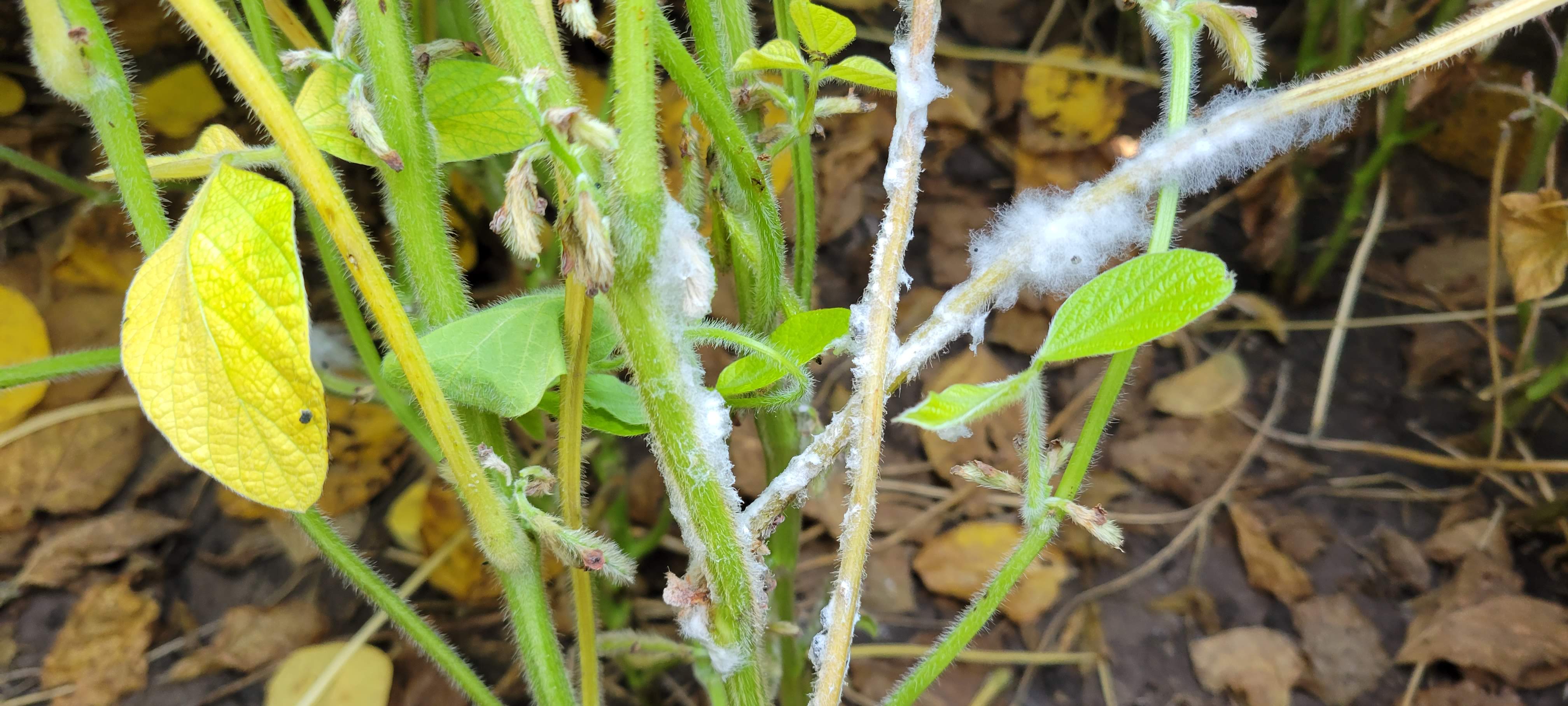Details:
Sclerotinia stem rot (white mold) was scouted in soybeans at the R4 (full pod) growth stage. Infected plants were between 75-100% damaged, and around 25% of the site was infected. White mold is caused by the pathogen Sclerotinia sclerotiorum. It can overwinter in the soil as a hard dark mass called sclerotia. Plants are infected during flowering and symptoms may include wilted and discolored leaves, white mycelium growth on stems and pods, and stems or pods that appear water soaked.
Conclusion:
If you are seeing white mold development , infection likely occurred days to weeks ago. Infection occurs through the flowers, so plants are no longer susceptible after the flowering stage concludes. If only few flowers remain than the chance of new infection is low. While many fungicides are labeled for white mold control, they are only effective when they are applied in the same window in which plants are susceptible. Fungicide applications are not economical after R4. For future white mold management, consider planting varieties that are not highly susceptible, increasing row spacing, and avoiding irrigation during flowering. Crop rotation with non-host crops can help reduce disease pressure, but cannot prevent disease development.
Contributor:
Dylan Mangel
University of Nebraska-Lincoln
Resources:
White Mold | UNL Cropwatch







